
The 1980s. What a time to be alive, right? We’re talking about peak Michael Jackson, the dawn of MTV, the endless possibilities of the Atari 2600, and of course, those unforgettable mullets, hi-top fades, and big perms. But for us automotive fanatics, the ’80s were about something even more thrilling: a golden era where epic sports cars and groundbreaking supercars roared onto the scene, shaping our dreams and carving their names into history.
This decade represented a fascinating transition for the performance car market. With the fuel embargo fading into the rearview mirror and gas becoming affordable once more, manufacturers were free to unleash their creativity. While EPA regulations influenced design and driving dynamics, both good and bad, the American sports car market, in particular, was evolving at a rapid pace. This period gifted us some of the most memorable vehicles, many of which remain coveted classics to this very day, embodying a purity and down-to-earthness that feels increasingly rare in our current digital age.
For those who lived through it, and even for those experiencing it through a third-party lens, the automobiles of this era typify a unique sentiment. Forget the narrow-minded obsession with 0-60 mph times or raw horsepower figures that dominate today’s marketing. True automotive enthusiasts, then and now, understood that a good sports car was defined by its character and charisma. We’re talking about those distinctive boxy silhouettes, the charming pop-up headlights, the exhilarating surge of laggy turbos, and the visceral thrill of high-revving naturally-aspirated engines. These are the machines that ignite passion, and we’re about to take a deep dive into 14 absolute kings of speed and style from this legendary decade.

1. Ferrari Testarossa: The Ultimate Status Symbol
Few vehicles encapsulate the unadulterated excess and sheer glamour of the 1980s quite as vividly as the Ferrari Testarossa. With its undeniably wide stance, those instantly recognizable distinctive side strakes, and a powerful flat-12 engine nestled within, the Testarossa wasn’t just a car; it was a bona fide poster icon for an entire generation of enthusiasts and aspirational drivers alike. Its presence was simply undeniable, a rolling sculpture of speed and success.
This magnificent machine wasn’t just confined to the pages of magazines or the dreams of teenagers; it cemented its legendary status through prominent appearances in popular culture. Its starring roles in hit TV shows, most famously ‘Miami Vice,’ catapulted its reputation, transforming it into the quintessential symbol of success, high-octane speed, and an enviable lifestyle that many could only dream of achieving. It was, quite literally, the car you drove when you had truly arrived.
The Testarossa’s design, characterized by its bold lines and aggressive proportions, was a statement in itself. Every angle screamed performance, every curve hinted at the thrilling capabilities hidden beneath its sculpted bodywork. It was a testament to Ferrari’s commitment to not just building fast cars, but crafting automotive art that captivated onlookers and drivers alike. To own one was to own a piece of the decade’s most opulent narrative.
Car Model Information: 1988 Ferrari Testarossa
Name: Ferrari Testarossa, 512 TR and F512 M
Manufacturer: Ferrari
Production: 1984–1996,9,939 produced
Assembly: Maranello
Predecessor: Ferrari Berlinetta Boxer
Class: Sports car,Grand tourer
BodyStyle: berlinetta
Layout: Rear mid-engine, rear-wheel-drive layout
Engine: Ferrari flat-12 engine,Flat-12 engine
Transmission: Manual transmission
Designer: Leonardo Fioravanti (engineer)
Categories: 1990s cars, All articles with dead external links, All articles with unsourced statements, Articles containing Latin-language text, Articles with dead external links from February 2018
Summary: The Ferrari Testarossa (Type F110) is a 12-cylinder mid-engine sports car manufactured by Ferrari, which went into production in 1984 as the successor to the Ferrari Berlinetta Boxer. The Pininfarina-designed car was originally produced from 1984 until 1991, with two model revisions following the end of Testarossa production called the 512 TR and F512 M, which were produced from 1992 until 1996. Including revised variations, almost 10,000 cars in total were produced, making it at the time one of the most mass-produced Ferrari models.
The Testarossa is a two-door coupé that premiered at the 1984 Paris Auto Show. All versions of the Testarossa were available with a rear-mounted, five-speed manual transmission. The rear mid-engine design (engine between the axles but behind the cabin) keeps the centre of gravity in the middle of the car, which increases stability and improves the car’s cornering ability, and thus results in a standing weight distribution of 40% front: 60% rear.
The original Testarossa was re-engineered for the 1992 model year and was introduced as the 512 TR (TR meaning TestaRossa), at the Los Angeles Auto Show, effectively as a completely new car, and an improved weight distribution of 41% front, 59% rear. Another new variant called the F512 M was introduced at the 1994 Paris Auto Show. The car dropped the TR initials and added the M which in Italian stood for modificata, or translated to modified, and was the final version of the Testarossa, which continued its predecessor’s weight distribution improvement of 42% front, 58% rear. The F512 M was Ferrari’s last vehicle that featured the flat-12 engine.
The Testarossa is a recognized cultural icon of the 1980s, and was popularized by media including the 1984 television series Miami Vice (from the 1986 season onward) and Sega’s 1986 video game Out Run.
Get more information about: Ferrari Testarossa
Buying a high-performing used car >>>
Brand: Ferrari Model: Testarossa
Price: $219,947 Mileage: 4,747 mi.
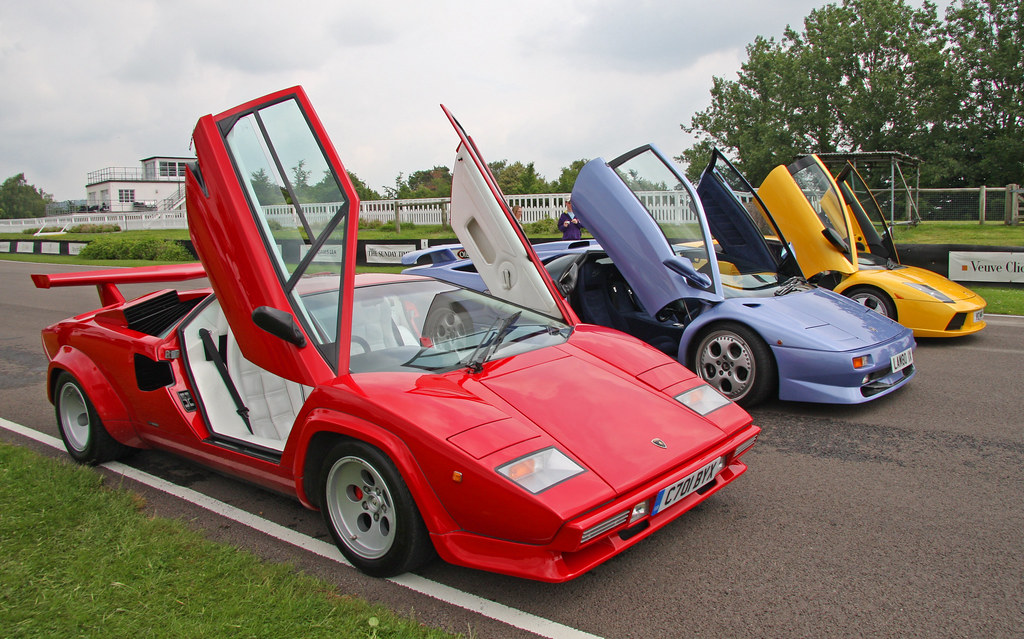
2. Lamborghini Countach: Radical and Unforgettable
While the Lamborghini Countach had already established itself as an undeniable head-turner back in the 1970s, its iterations released throughout the 1980s pushed the boundaries even further, bringing forth an even more aggressive styling and an increase in raw performance. This wasn’t just an evolution; it was a revolution of automotive audacity, making a statement that few cars before or since have managed to replicate with such force.
The Countach was a symphony of sharp angles, pronounced wedge shapes, and the absolutely iconic scissor doors that would swing upwards, revealing an interior that was as much a cockpit as it was a cabin. Underneath its dramatic skin lay a monstrous V12 engine, ready to unleash a cacophony of power and a spine-tingling exhaust note that announced its presence long before it appeared. It was the absolute epitome of automotive theater.
More than just a car, the Countach became a benchmark for what a supercar could be. Its utterly futuristic and unapologetic design ethos didn’t just turn heads; it influenced countless other sports cars for years, setting a new standard for exotic aesthetics and raw, unbridled power. Its legacy is etched deeply into the history books as a machine that dared to be different and succeeded spectacularly.
Car Model Information: 1986 Lamborghini Countach LP5000 Quattrovalvole
Name: Lamborghini Countach
Caption: Lamborghini Countach LP5000 QV
Manufacturer: Lamborghini
Production: 1974–1990
Assembly: Sant’Agata Bolognese
Designer: Marcello Gandini
Class: Sports car
BodyStyle: coupe
Layout: Longitudinal engine,mid-engine,rear-wheel-drive
Related: Lamborghini LM002
Engine: Lamborghini V12,V12 engine,LP400, LP400 S: {{cvt,3929,cc,L,1,disp=flip
Transmission: synchromesh,Manual transmission
Wheelbase: 96.46 in
Abbr: on (LP5000QV)
Order: flip
Length: 162.99 in
Width: LP 400: {{cvt,74.28,in,mm,0,abbr=on,order=flip
Height: 42.13 in
Weight: {{convert,1300.5,kg,lb,0,abbr=on
Predecessor: Lamborghini Miura
Successor: Lamborghini Diablo
Doors: Scissor doors
Sp: uk
Categories: 1980s cars, 1990s cars, All articles with unsourced statements, Articles containing Italian-language text, Articles containing Piedmontese-language text
Summary: The Lamborghini Countach ( KOON-tahsh) is a rear mid-engine, rear-wheel-drive sports car produced by the Italian automobile manufacturer Lamborghini from 1974 until 1990. It is one of the many exotic designs developed by Italian design house Bertone, which pioneered and popularized the sharply angled “Italian Wedge” shape.
The wedge style was introduced to the public in 1970 with the Lancia Stratos Zero concept car. The first showing of the Countach prototype was at the 1971 Geneva Motor Show, as the Lamborghini LP500 concept.
The “Countach” nameplate was reused for the Sián-based limited-production hybrid-electric model called the Countach LPI 800-4 in 2021.
Get more information about: Lamborghini Countach
Buying a high-performing used car >>>
Brand: Lamborghini Model: Countach
Price: $674,900 Mileage: 15,743 mi.
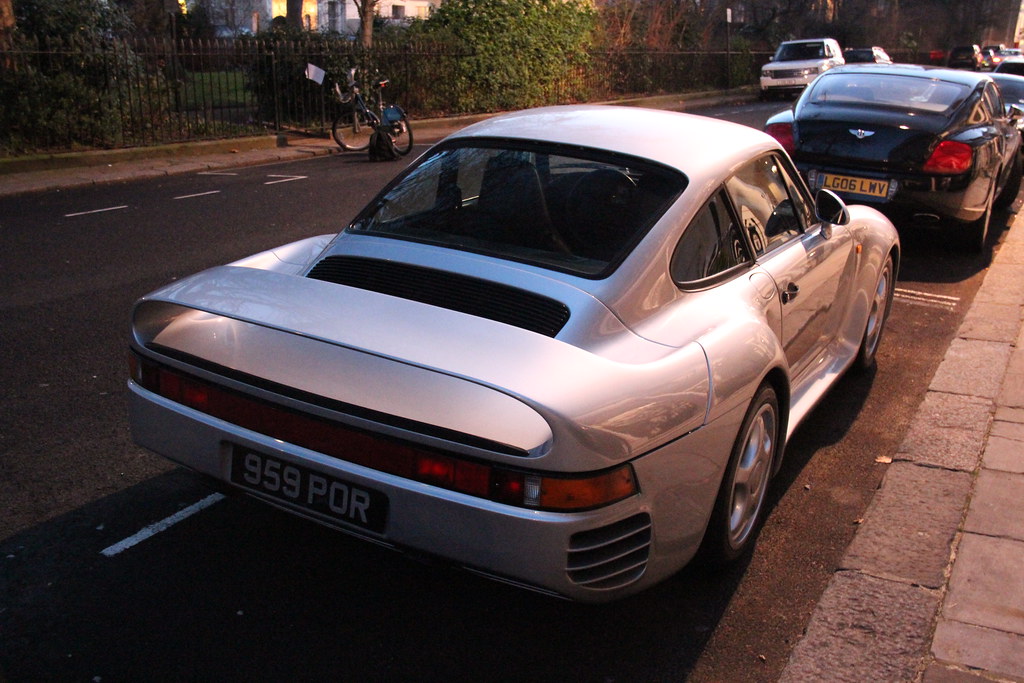
3. Porsche 959: A Technological Marvel
The Porsche 959 was nothing short of a visionary achievement, a car so far ahead of its time that it almost felt like it belonged to the next century. This was a vehicle that masterfully blended raw supercar performance with an array of groundbreaking technologies, setting a new benchmark for what was considered possible in high-performance automotive engineering during the mid-1980s. It was a true marvel of German ingenuity and precision.
Beneath its sleek and aerodynamic bodywork, the 959 housed a twin-turbocharged flat-six engine, an advanced all-wheel-drive system that was revolutionary for its era, and active aerodynamics that could adapt to driving conditions. These innovations weren’t just for show; they propelled the 959 well past the 200-mph mark, making it not only the fastest production car of its time but also an undeniable showcase of engineering brilliance.
The 959’s journey began with an intent to dominate Group B rally competition, and while that class eventually saw its demise, the lessons learned filtered directly into this road-going homologation special. Its sophisticated all-wheel-drive system and use of advanced materials like Kevlar and Nomex in its body construction highlighted Porsche’s relentless pursuit of perfection. This was truly the ‘forbidden ’80s supercar fruit’ that tantalized enthusiasts worldwide, and its legacy as an engineering icon remains undisputed.
Read more about: Timeless Machines, Modern Rules: Unpacking the Legality of Classic Cars Lacking Modern Safety Features
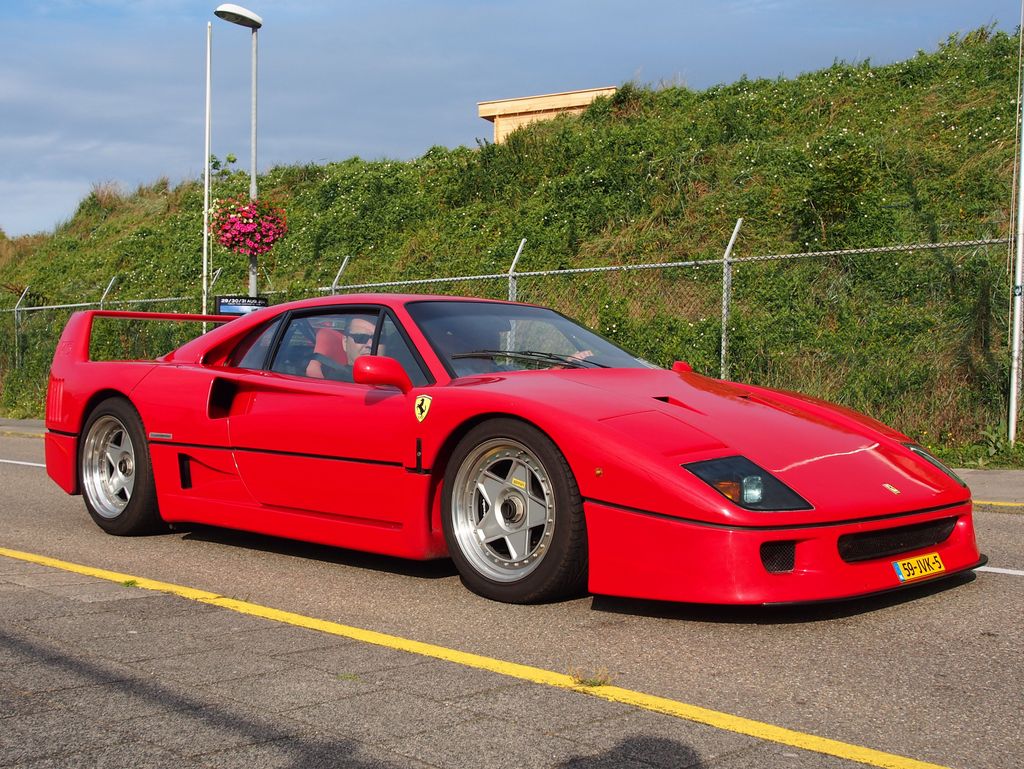
4. Ferrari F40: Raw, Unadulterated Italian Passion
Hot on the heels of the technologically advanced Porsche 959, Italy delivered its emphatic answer to the German supercar challenge: the legendary Ferrari F40. This machine, derived in part from the brand’s 288 GTO Evoluzione concept (also intended for the ill-fated Group B), saw Ferrari spare absolutely no expense in its development, aiming to create nothing less than the ultimate street car of the decade. It was a pure, visceral celebration of driving.
The F40 was equipped with a sensational-sounding 2.9-liter, twin-turbo V-8 engine that produced a stout 417 horsepower and 426 lb-ft of torque, all of which was dumped directly to the rear wheels. This wasn’t a car designed for comfort or convenience; it relied entirely on the skill and bravery of its driver to keep it pointed on the straight and narrow. Critically, there was no ABS, no power steering, and not even power brakes to be found in this model, demanding an unfiltered connection between man and machine.
While it might have been slightly slower off the line than the all-wheel-drive 959 due to its lack of AWD traction, the F40 embraced similar lightweighting concepts. It featured a Kevlar weave throughout its body panels, and early models were famously painted with less than a half-gallon of paint across the entire car to shave off every possible ounce. All told, this Ferrari was an astonishing 800 pounds lighter than its Porsche rival, making it a truly hardcore, driver-focused masterpiece that screamed passion from every fiber of its being.
Car Model Information: 1990 Ferrari F40
Name: Ferrari F40
Manufacturer: Ferrari
Production: 1987–1996,1,311 produced (including LM, Competizione and GTE)
Class: Sports car
Assembly: Maranello
Predecessor: Ferrari 288 GTO
Successor: Ferrari F50
BodyStyle: berlinetta
Layout: Longitudinal engine,Rear mid-engine, rear-wheel drive layout
Engine: cvt,twin-turbo
Powerout: cvt,cvt
Transmission: manual transmission
Wheelbase: cvt
Length: cvt
Width: cvt
Height: cvt
Weight: cvt
Sp: uk
Designer: ill
Categories: 1990s cars, 24 Hours of Le Mans race cars, All articles with unsourced statements, Articles with short description, Articles with unsourced statements from July 2023
Summary: The Ferrari F40 (Type F120) is a mid-engine, rear-wheel drive sports car engineered by Nicola Materazzi with styling by Pininfarina. It was built from 1987 until 1993, with the LM, Competizione and GTE race car versions continuing production from 1994 to 1996 respectively. As the successor to the 288 GTO (also engineered by Materazzi), it was designed to celebrate Ferrari’s 40th anniversary and was the last Ferrari automobile personally approved by Enzo Ferrari. At the time it was Ferrari’s fastest, most powerful, and most expensive car for sale.
The car debuted with a planned production total of four hundred units and a factory suggested retail price of approximately US$400,000 (fivefold the price of its predecessor, the 288 GTO) in 1987 ($1,110,000 today). One of those that belonged to the Formula One driver Nigel Mansell was sold for the then record of £1 million in 1990, a record that stood into the 2010s. A total of 1,311 to 1,315 cars were manufactured with 213 units destined for the United States.
Get more information about: Ferrari F40
Buying a high-performing used car >>>
Brand: Ferrari Model: F40
Price: Not Priced Mileage: 3,511 mi.
Read more about: Unlocking the Vault: A Deep Dive into Ralph Lauren’s Multi-Million Dollar Ferrari Collection and Beyond
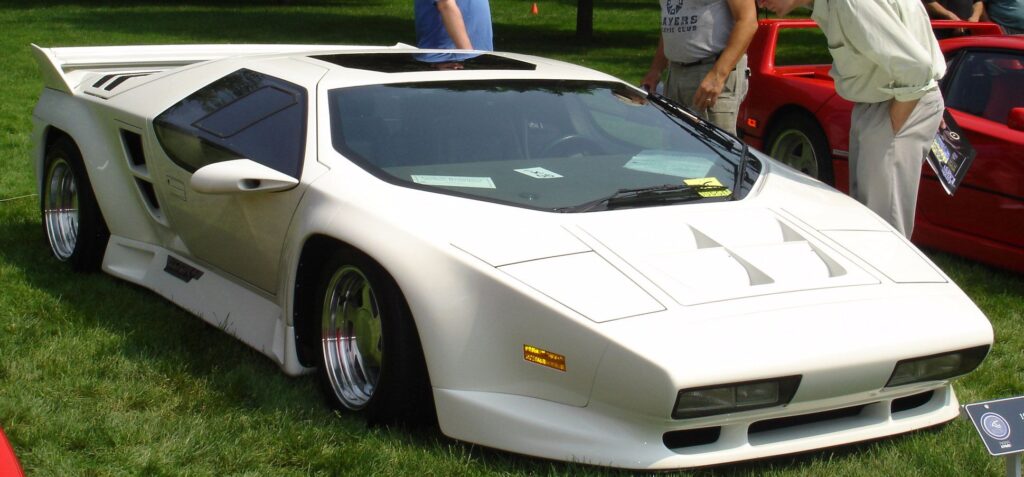
5. Vector W8: The American Dream, Almost Realized
The Vector W8 represents one of the great American “what might have been” stories of the 1980s supercar age, plagued by financial difficulties yet burning brightly with audacious ambition. With a long development arc that began in the twilight years of the 1970s, this wicked wedge didn’t actually reach full production until 1989. Even then, only a mere 20 examples of this visually striking machine were meticulously built over the course of the following four years.
This distinctive coupé featured an anachronistic de Dion rear suspension setup and, surprisingly for a supercar of its caliber, an automatic transmission. However, its true heart was a monstrous twin-turbo V-8 engine that generated an enormous 625 horsepower and a staggering 649 lb-ft of torque. Such prodigious power was reportedly enough to propel the W8 to a claimed top speed of an incredible 242 miles per hour, pushing the boundaries of what was thought possible for an American-made exotic.
Despite its limited production numbers, the hype and sheer visual impact that surrounded the Vector W8 permanently embedded it in the ’80s exotic zeitgeist. Only a handful of people ever truly got to sample this wild-looking coupe at its full throttle potential, but its futuristic, angular design and the sheer audacity of its performance claims ensured its place as an enduring symbol of American innovation and a daring challenge to the established European supercar hierarchy.

6. Ruf CTR Yellowbird: A Porsche That Isn’t Quite
The second super-fast Porsche on this illustrious list carries a fascinating distinction: it isn’t officially a Porsche at all. Ruf Automobile, a name revered by enthusiasts, has a long and storied history of not only tuning existing cars to incredible levels but also building its own unique models. The CTR Yellowbird, while a dead ringer for a Porsche 911 Carrera in appearance, was officially its own standalone marque, a testament to Ruf’s engineering prowess.
The Ruf CTR managed to squeeze an advertised 463 horsepower out of its turbocharged 3.4-liter six-cylinder engine, though many claimed that this figure was significantly under what the motor actually delivered on the dyno. What truly cemented the Yellowbird’s legend, however, was its stunning performance captured in the iconic ‘Faszination’ promotional video, particularly the in-car footage from its blistering Nürburgring lap.
This video became a cornerstone of its legend, showcasing its incredible handling and raw speed. Even today, the Yellowbird’s lap time at the Nürburgring holds up remarkably well when compared against significantly more modern machinery, a testament to its timeless engineering and the sheer skill involved in its creation. It was a pure, unadulterated driving machine that created its own mythos.
Car Model Information: 2025 Audi Q7 55 Premium Plus
Name: Ruf CTR “Yellowbird”
Manufacturer: Ruf Automobile
Class: Sports car
Production: 1987–1996 (29 built from scratch, rest converted from customer cars)
Assembly: Pfaffenhausen
Predecessor: Ruf BTR
Successor: Ruf CTR2,Ruf CTR Anniversary
BodyStyle: coupé
Layout: Longitudinal engine,Rear-engine, rear-wheel-drive layout
Engine: 3367 cc
Abbr: on
Order: twin-turbo
Powerout: 469 PS
Transmission: manual transmission
Wheelbase: 2273 mm
Length: 4290 mm
Width: 1775 mm
Height: 1311 mm
Weight: 1150 kg
Related: Porsche 911 (classic)
Categories: Articles with short description, Cars discontinued in 1996, Cars introduced in 1987, Cars powered by boxer engines, Commons category link from Wikidata
Summary: The Ruf CTR (Group C, Turbo Ruf) also known as the CTR Yellowbird or simply Yellowbird, is a limited-production, high performance sports car manufactured by German automobile manufacturer Ruf Automobile. Introduced for the 1987 model year and based on the Porsche 911, the CTR featured an enlarged and highly tuned version of Porsche’s 3.2 litre flat-six cylinder engine, lightened body panels, an integrated roll cage (adding chassis stiffness in addition to occupant safety), upgraded suspension and braking systems, a custom-designed transmission, and several unique trim pieces such as polyurethane bumpers, and the use of the side-mounted oil filler (a Porsche feature for the 1972 model year only) necessitated by relocating the oil tank forward to clear the intercooler on that side.
The car received its nickname, “Yellowbird”, during testing by Road & Track magazine, whose staff members noted the contrast created by its yellow paintwork against the overcast skies on the day of their photo shoot.
Get more information about: Ruf CTR
Buying a high-performing used car >>>
Brand: Ruf Model: CTR Yellowbird
Price: $55,675 Mileage: 20,490 mi.
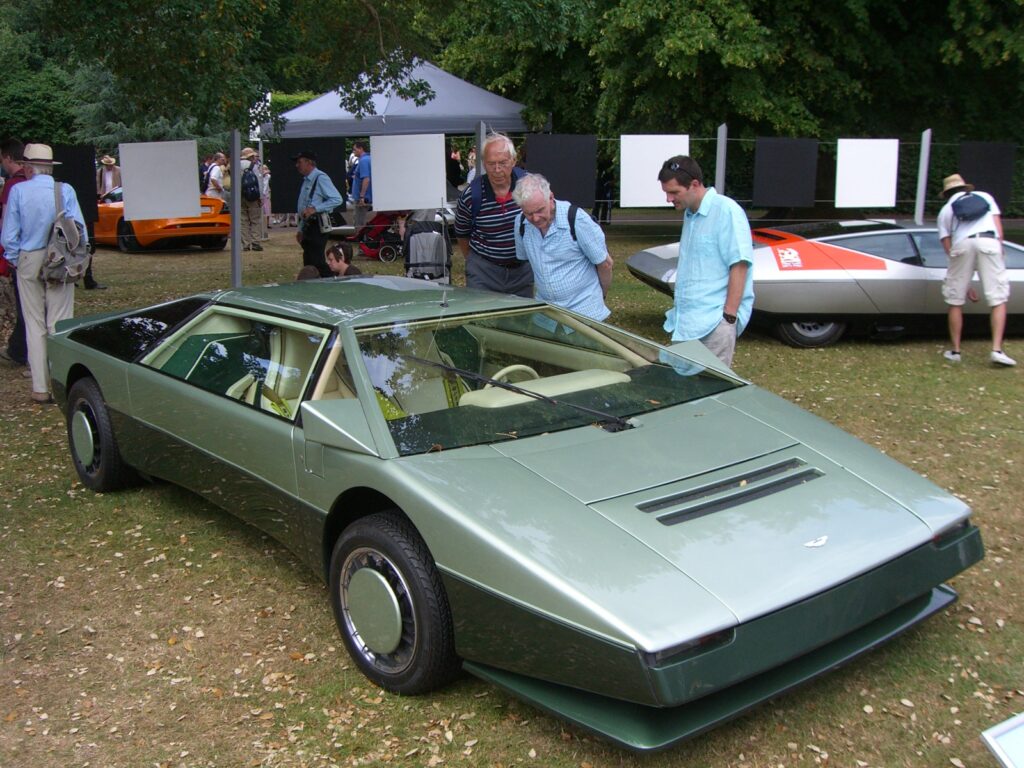
7. Aston Martin Bulldog: The British 200 MPH Dream
The Aston Martin Bulldog is another captivating and winding tale of supercar drama that began all the way back in 1980. This was when the very first—and ultimately, only—example of this uniquely flat, pug-nosed coupé was dramatically introduced to the public. It represented a bold departure for Aston Martin, an audacious attempt to venture into uncharted territory, visually and technically.
Outfitted with distinctive gullwing doors and possessing a silhouette that somewhat resembled a crushed version of the Aston Martin Lagonda, the Bulldog was truly unlike anything else in the automaker’s established stable. Crucially, it represented the company’s ambitious first attempt to break the formidable 200-mph barrier, a speed that was almost mythical at the time. This was a statement of intent, a declaration of Aston Martin’s capability to push beyond traditional luxury grand touring.
Although it was outfitted with a potent 600-horsepower, twin-turbo version of Aston Martin’s formidable 5.3-liter V-8, the Bulldog initially fell just short of its stated goal, achieving a still-impressive 191-mph run in early testing. Daunted by the immense economics and challenges of producing such an advanced automobile, the British concern eventually sold the Bulldog concept to a Saudi prince. However, its story didn’t end there; it was eventually resurrected in 2023, where it finally managed to crack the elusive 205 mph mark in a highly publicized closed-course run, fulfilling its original destiny decades later. It remains a singular vision of 1980s British supercar ambition.
Car Model Information: 2025 Audi Q7 55 Premium Plus
Name: Aston Martin Bulldog
Caption: Goodwood Festival of Speed
Manufacturer: Aston Martin
Production: 1979 (1 produced)
Assembly: Newport Pagnell
Designer: William Towns
Class: Concept car
BodyStyle: coupe
Layout: MR layout
Engine: Aston Martin V8 engine
Wheelbase: 2769 mm
Length: 4724 mm (186 in)
Width: 1918 mm
Height: 1092 mm (43 in)
Weight: 1727 kg (3807 lbs)
Doors: Gullwing doors
Sp: uk
Categories: All Wikipedia articles written in British English, Articles with short description, Aston Martin concept vehicles, Automobiles with gull-wing doors, Cars introduced in 1979
Summary: The Aston Martin Bulldog, styled by William Towns, is a British, one-off concept vehicle produced by Aston Martin in 1979. The code name for the project was DP K901. Initially, a production run of 15–25 cars was planned, but the project was deemed too costly and only one was built.
Get more information about: Aston Martin Bulldog
Buying a high-performing used car >>>
Brand: Aston Martin Model: Bulldog
Price: $55,675 Mileage: 20,490 mi.
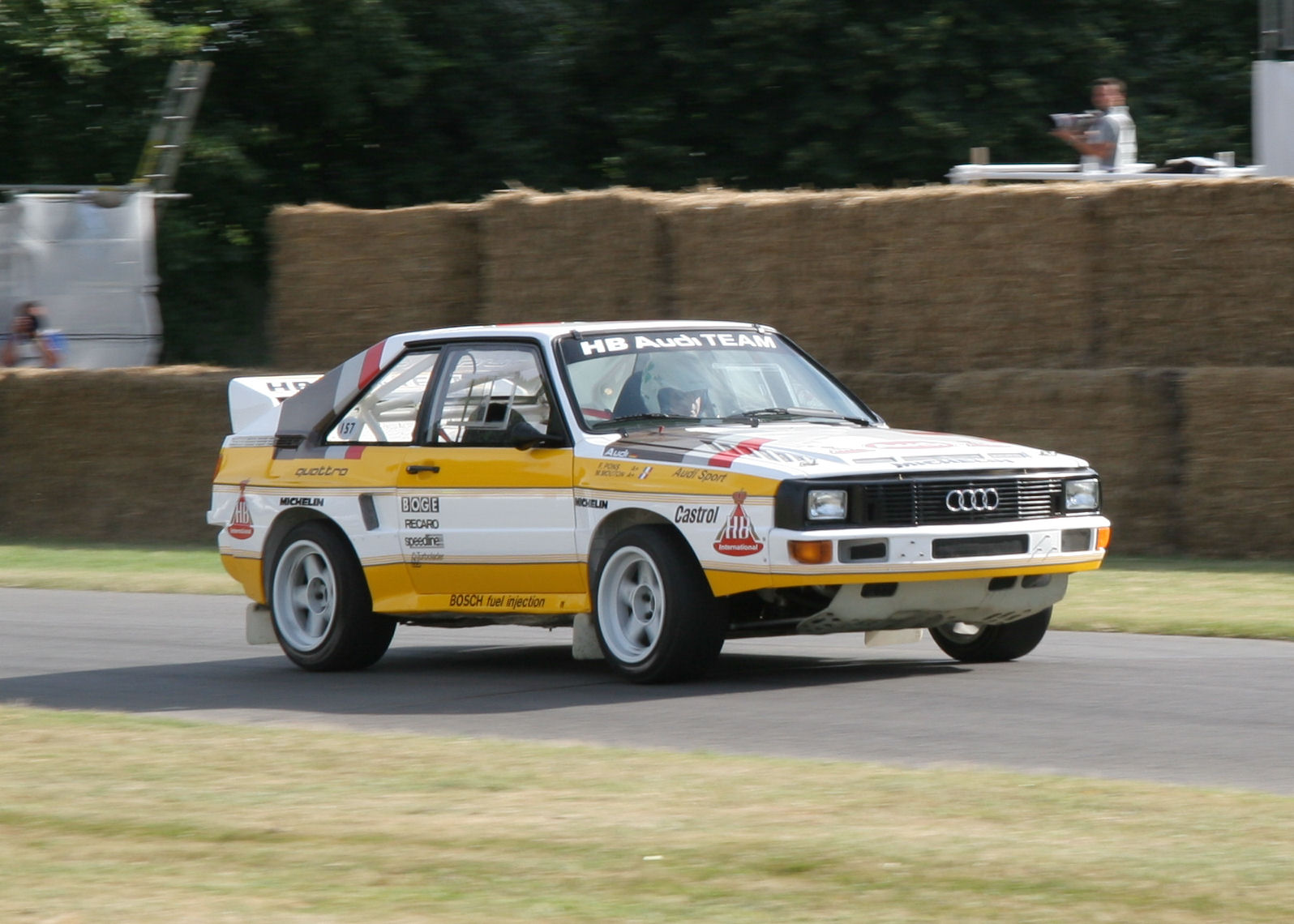
8. Audi Quattro: Rally Legend Redefined
The Audi Quattro didn’t just compete in rally racing; it revolutionized it, forever changing the trajectory of production car technology. Introduced in 1981, this groundbreaking machine was the first rally car to effectively and reliably utilize an all-wheel-drive system, proving that AWD could be a significant performance advantage on any surface. Its impact was immediate and profound, setting a new benchmark for future cars fitted with such a drivetrain and essentially forcing rivals to adapt or be left behind.
This wasn’t just a marketing gimmick; the Quattro dominated rally stages across the globe, capturing hearts and trophies. While the original Quattro eventually saw its shortcomings in terms of weight and dimensions as competition intensified, it paved the way for the even more extreme Audi Sport Quattro in 1984. Taking advantage of lenient homologation requirements, Audi engineers produced the required 200 Sport Quattro cars, equipped with a unique 5-cylinder turbocharged powerplant churning out an impressive 302 hp at 6,500 rpm. The Sport Quattro’s shortened wheelbase and advanced engineering further solidified Audi’s commitment to pushing boundaries.
The Audi Quattro’s legacy extends far beyond its racing victories. Its angular design, turbocharged engine, and pioneering all-wheel-drive system made it an icon of the 1980s. It solidified Audi’s reputation for engineering prowess and forever linked the brand with high-performance AWD, influencing countless road cars and cementing its place as a pivotal figure in automotive history. It truly changed the game for sports cars and motorsports alike, making it a definitive ’80s legend.
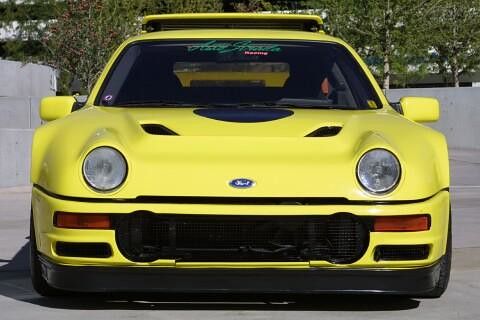
9. Ford RS200: Group B’s Untamed Beast
For years, automotive enthusiasts and even those casually flipping through the Guinness Book of Records were often baffled to find that the world’s fastest accelerating car was a Ford – the curiously small, almost goofy-looking RS200. This vehicle was built from the ground up for the brutal, no-holds-barred world of Group B rally racing. It was a short-wheelbase, four-wheel-drive missile that demanded incredible finesse and bravery to extract its full potential, a true motorsport machine unlike any other production Ford.
To meet the FIA’s stringent homologation requirements, Ford had to produce 200 road-going models. These customer cars featured a 1.8-liter Cosworth-tuned four-cylinder motor that delivered around 250 bhp, maintaining its rally roots with characteristically short overhangs, a large hood scoop, a roof air-inlet, and an eccentric rear wing. Its lightweight composite body and mid-engine layout embodied the pinnacle of 1980s rally engineering, designed for sheer competition.
The RS200 Evolution variant, in particular, boasted one of the best all-wheel-drive systems of its time, providing enough grip to launch the car from 0 to 60 mph in just 3.0 seconds. This was faster than anything else in production in 1986, a record it held for the next dozen years. Though its competition life was tragically cut short, the RS200 remains a cult favorite, a testament to its technological marvel. Ford later converted competition cars into street-legal Evo models with 600 horsepower, bringing its rally prowess to public roads.
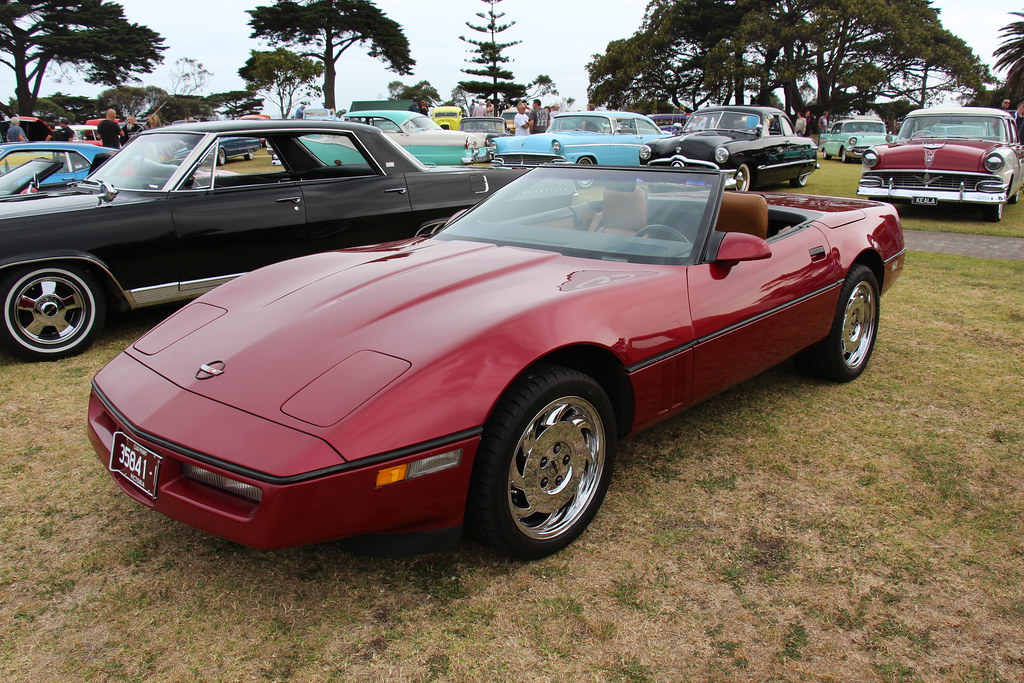
10. Chevrolet Corvette C4: America’s Sharpened Edge
The fourth-generation Corvette, universally known as the C4, represented a monumental shift for America’s iconic sports car. It dramatically departed from its predecessors, shedding older, curvier lines for a sleek, aerodynamic, and thoroughly modern aesthetic. This wasn’t just a styling update; the C4 was equipped with advanced technology for its era, including groundbreaking digital dashboards, signaling a bold new direction for the beloved ‘Vette.
Beyond its striking new looks, the C4 revitalized the Corvette’s performance credentials, offering impressive handling that finally matched its sporting pretensions. It delivered a more refined and controlled driving experience compared to the raw, sometimes unwieldy, C3, thanks to a completely redesigned chassis and suspension. This newfound precision made it a genuinely competitive sports car on a global stage, proving that America could build a vehicle that could carve corners with the best of them.
Crucially, the C4 managed to achieve this while remaining relatively affordable, making it an incredibly popular choice and a favorite among a wide spectrum of enthusiasts looking for serious American performance without breaking the bank. It offered a compelling blend of power, style, and improved dynamics that resonated with a generation eager for cutting-edge automotive excitement. The C4 truly broadened the Corvette’s appeal, transitioning it from a pure muscle car image to a more sophisticated sports car.
While the base C4 provided a solid foundation, the generation also laid the groundwork for future high-performance variants, most notably the Callaway Sledgehammer. This single, aero-modded C4, boasting an astounding 898 horsepower from a twin-turbo 5.7-liter V-8 engine, blasted past the 250-mph mark. It made a reasonable claim to being the first American supercar on the modern landscape, and no ‘Vette has surpassed its performance to date.
Car Model Information: 2025 Audi Q7 55 Premium Plus
Name: Chevrolet Corvette (C4)
Caption: 1994 Chevrolet Corvette
Manufacturer: Chevrolet
Production: January 3, 1983 – June 20, 1996
ModelYears: 1984–1996
Predecessor: Chevrolet Corvette (C3)
Successor: Chevrolet Corvette (C5)
Class: Sports car
Assembly: Bowling Green, Kentucky
BodyStyle: targa top,Convertible (car)
Layout: Front-engine, rear-wheel-drive layout#FMR
Platform: GM Y platform
Wheelbase: cvt
Length: cvt
Width: cvt
Height: Coupe: {{cvt,46.7,in,mm
Transmission: automatic transmission,Overdrive (mechanics),GM 4L60-E transmission,ZF Friedrichshafen
Engine: {{cvt,350,cuin,L,1,Chevrolet small-block engine (first- and second-generation)#L83
Weight: cvt
Designer: Jerry Palmer
Related: Callaway Cars#C4 (RPO B2K Callaway Twin Turbo Corvette),Callaway Cars#C4 (RPO B2K Callaway Twin Turbo Corvette),Callaway Cars#C4 (RPO B2K Callaway Twin Turbo Corvette),Callaway Cars#C6 (Callaway SuperNatural Corvette),Callaway Cars#C4 (RPO B2K Callaway Twin Turbo Corvette)
Categories: 1990s cars, All articles with dead external links, All articles with unsourced statements, Articles with dead external links from November 2016, Articles with permanently dead external links
Summary: The Chevrolet Corvette (C4) is the fourth generation of the Corvette sports car, produced by American automobile manufacturer Chevrolet from 1983 until 1996. The convertible returned, as did higher performance engines, exemplified by the 375 hp (280 kW) LT5 found in the ZR1. In early March 1990, the ZR1 would set new records for the highest average speed over 24 hours at over 175 mph (282 km/h) and highest average speed over 5,000 miles at over 173 mph (278 km/h). With a completely new chassis, modern sleeker styling, and other improvements to the model, prices rose and sales declined. The last C4 was produced on June 20, 1996.
Get more information about: Chevrolet Corvette (C4)
Buying a high-performing used car >>>
Brand: Chevrolet Model: Corvette C4
Price: $55,675 Mileage: 20,490 mi.
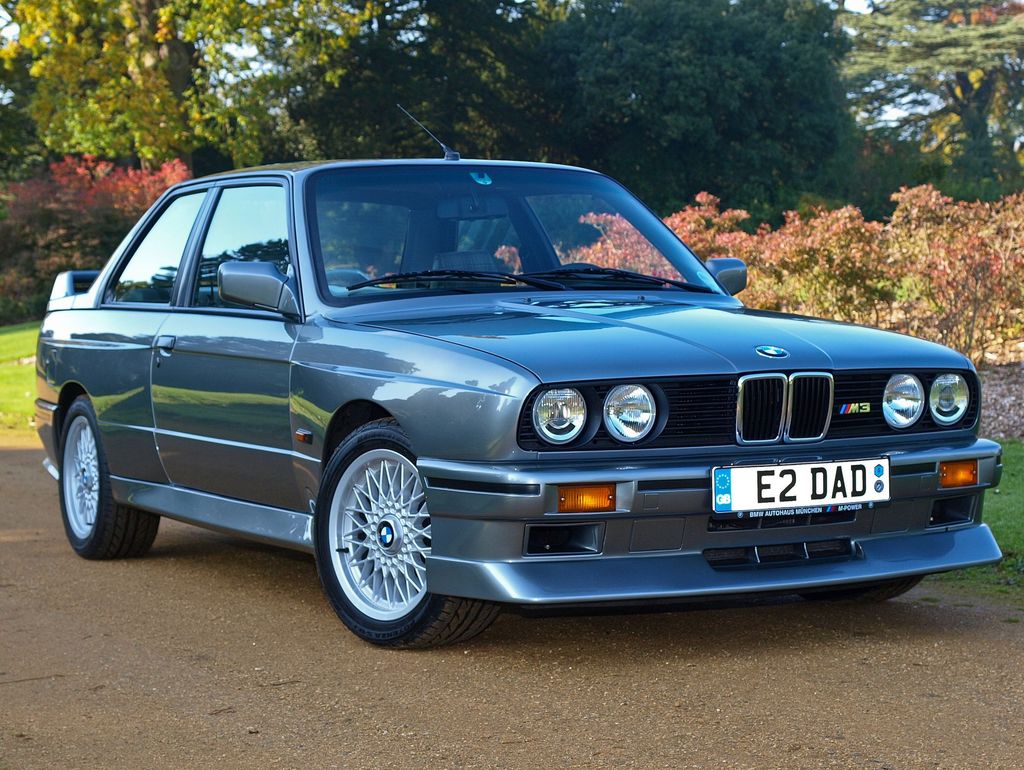
11. BMW M3 E30: The Genesis of a Legend
The BMW M3 E30 is more than just a car; it’s the genesis for one of the greatest sports cars in the world, born out of necessity for homologation. Based on the 1986 model year E30 3-Series, BMW’s Motorsport division transformed the diminutive commuter into a driver-focused, rear-wheel-drive sports car that spoke directly to the true enthusiast. It was engineered to dominate touring car racing, and dominate it did.
Under the hood, the E30 M3 featured the now-legendary BMW S14 engine, a naturally-aspirated 4-cylinder unit that produced 215 PS. The “Evolution” model pushed these figures further, producing up to 220 PS. This enhanced performance was complemented by weight-saving measures like thinner window glass and a lighter boot lid, along with aerodynamic tweaks such as a deeper front splitter and an additional rear spoiler, all designed to maximize its track potential.
The E30 M3’s success in racing circuits, where it famously made mincemeat out of Mercedes in DTM and ruled British Touring Car and many other series, cemented its legendary status. This was a car born for competition, yet it translated its track prowess seamlessly to the road, offering an unfiltered, engaging, and utterly exhilarating driving experience. Its multi-link suspension and near-perfect weight distribution provided unparalleled handling, making it a joy on winding roads and a terror on the track.
The enduring appeal of the E30 M3 lies in its purity, balance, and the direct connection it provides between driver and machine. It lacked the electronic nannies and digital interference that would become common in later performance cars, offering a visceral, analog driving experience that enthusiasts cherish. This focus on driver engagement, combined with its iconic boxy styling and proven racing pedigree, makes it a highly coveted classic that continues to define what a true driver’s car should be.
Car Model Information: 2025 Audi Q7 55 Premium Plus
Name: BMW M3
Caption: 2021 BMW M3 Competition (G80)
Manufacturer: BMW M
Production: unbulleted list
Class: Compact executive car
Layout: unbulleted list
Related: unbulleted list
Categories: 1990s cars, 2000s cars, 2010s cars, 2020s cars, All Wikipedia articles written in British English
Summary: The BMW M3 is a high-performance version of the BMW 3 Series, developed by BMW’s in-house motorsport division, BMW M GmbH. M3 models have been produced for every generation of 3 Series since the E30 M3 was introduced in 1986.
The initial model was available in a coupé body style, with a convertible body style made available soon after. M3 saloons were offered initially during the E36 (1994–1999) and E90 (2008–2012) generations. Since 2014, the coupé and convertible models have been rebranded as the 4 Series range, making the high-performance variant the M4. Variants of the 3 Series since then have seen the M3 produced as a saloon, until 2020, when the M3 was produced as an estate (Touring) for the first time, alongside the saloon variant.
Get more information about: BMW M3
Buying a high-performing used car >>>
Brand: BMW Model: M3 E30
Price: $55,675 Mileage: 20,490 mi.
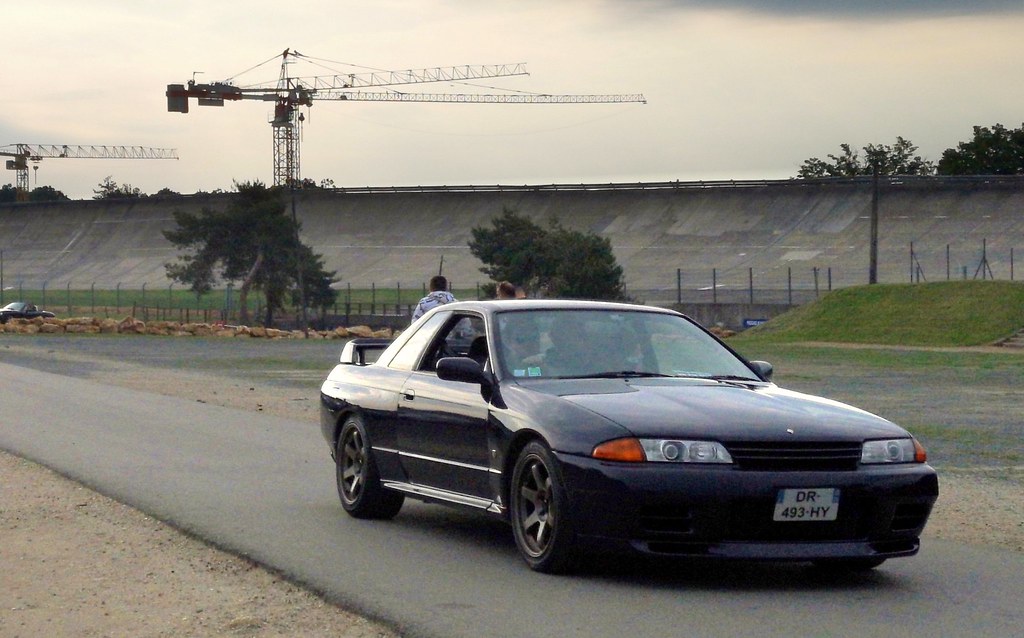
12. Nissan Skyline GT-R R32: Godzilla’s Ascent
Few cars have developed an immense racing pedigree quite like the Nissan Skyline GT-R, and the R32 generation is where the legend truly blossomed. As one of Japan’s most celebrated performance cars, the R32 GT-R, though making its debut in 1989, quickly established itself with over 200 race wins and five consecutive championship victories in the All-Japanese Touring Car Championships. This relentless pursuit of victory meant every aspect, from aerodynamics to body rigidity, was fine-tuned through competitive racing, creating an absolute marvel of engineering.
As a road car, the R32 GT-R pushed the boundaries of supercar engineering, reaching new heights of sophistication previously unseen in mass-produced Japanese performance vehicles. It featured multi-link suspension at both the front and rear, an electronically controlled intelligent four-wheel-drive system known as ATTESA E-TS, and even four-wheel steering. These advanced technologies worked in harmony to provide incredible grip, stability, and agility, allowing the car to perform exceptionally under diverse driving conditions.
Power came from a formidable 2.6-liter, 24-valve straight-6 engine, famously known as the RB26DETT. This powerhouse was boosted to an impressive 276 hp by a pair of ceramic turbochargers, creating a beast that redefined Japanese performance. This engine, combined with its sophisticated drivetrain, made the R32 a force to be reckoned with, capable of delivering blistering acceleration and incredible top speeds, often quietly outperforming its advertised power figures.
While the general public often associates the later R34 GT-R with the moniker ‘Godzilla,’ true enthusiasts know that the R32 is the real original gangster here. It was the R32 that achieved the unofficial lap record for a production car at the world-famous Nürburgring, a testament to its advanced engineering and blistering performance. Its blend of high-tech features, potent power, and race-proven handling established a legacy that continues to captivate enthusiasts globally, making it a true icon of the late ’80s and beyond, whose influence is still felt today.
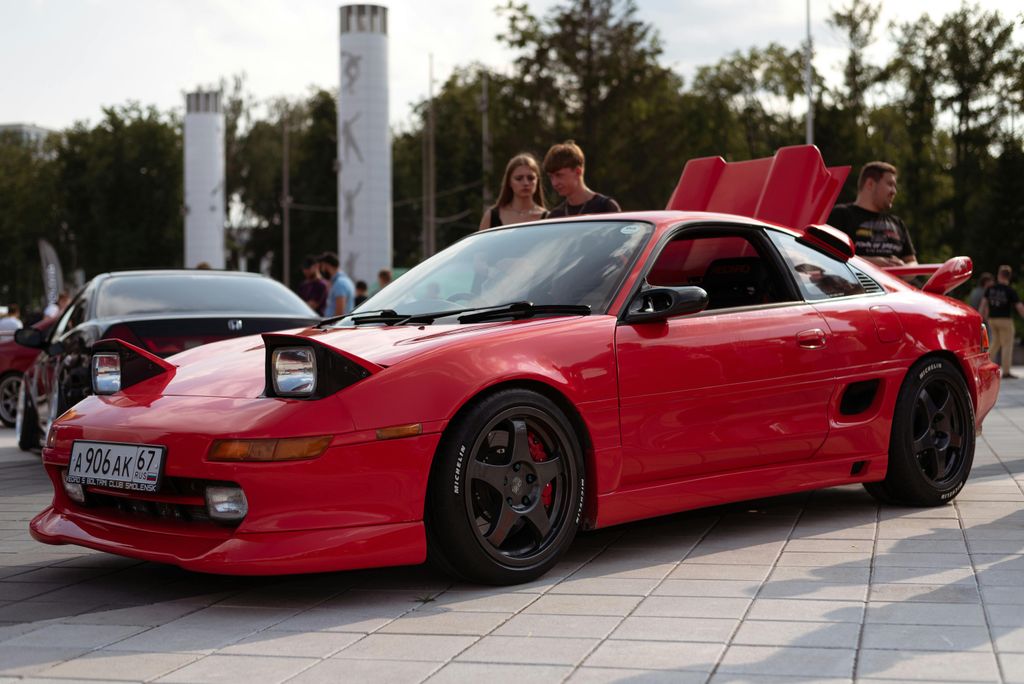
13. Toyota MR2 (AW11): The Mid-Engine Democratizer
The first-generation Toyota MR2, known internally as the AW11, was a truly revolutionary sports car. It embodied a perfect marriage of prime 1980s JDM characteristics with the exotic excitement of a mid-mounted engine. What made the MR2 stand out was its ability to offer this thrilling layout at an astonishingly affordable price, democratizing the mid-engine experience for a broader audience. It was reliable, sporty, and, for one of the first times in a mass-production Japanese car, truly exotic too.
Certain crowds liked to compare the car to the Pontiac Fiero, which was released a year prior, but the fact is that the MR2 was a cut above its competitor, which was plagued with various malaise issues. For its time, the MR2 had just about all the features you would expect in a scaled-down exotic car: a 1.6-liter inline-four engine mounted ahead of the rear axle, disc brakes all around, a crisp 5-speed manual transmission, and a fully-functional rear spoiler. Lightweight and nimble, it delivered an incredibly engaging driving experience that quickly established it as a serious contender in the lightweight sports car segment.
In 1987, Toyota upped the ante with the introduction of a supercharged variant, boosting power to 145 hp and 140 lb-ft of torque. This model also offered the option of a Targa-top with a removable glass panel, adding another layer of desirability and open-air driving pleasure. The MR2 solidified its place as a ‘pocket rocket’ that punched well above its weight class, leaving an enduring legacy as a beloved and innovative classic.
Car Model Information: 1993 Toyota MR2 Turbo
Name: Toyota MR2
Caption: Second generation MR2
Manufacturer: Central Motors
Aka: Toyota MR (France and Belgium)
Production: 1984–2007
Assembly: Sagamihara, Kanagawa
Class: Sports car
Layout: Rear mid-engine, rear-wheel-drive layout
ModelYears: 1985–2007
Categories: 1990s cars, 2000s cars, All Wikipedia articles written in American English, All articles containing potentially dated statements, All articles needing additional references
Summary: The Toyota MR2 is a two-seater sports car which was manufactured and marketed by Toyota from 1984 until 2007 over three generations. It was the first Japanese rear-mid-engine, rear-wheel-drive production car and was sold around the world. The first generation (W10) was produced from 1984 to 1989, the second generation (W20) from 1989 to 1999, and the third generation (W30) from 1999 to 2007.
Conceived as a small, economical and sporty car, the MR2 features a straight-four engine, transversely mounted in front of the rear axle, four-wheel disc brakes, and fully independent coilover suspension with MacPherson struts on each wheel.
The name MR2 stands for either “mid-ship run-about 2-seater” or “mid-engine, rear-wheel-drive, 2-seater”. In French-speaking markets, the vehicle was renamed Toyota MR because the abbreviation “MR2” sounds like the profanity “merdeux” when spoken in French.
Get more information about: Toyota MR2
Buying a high-performing used car >>>
Brand: Toyota Model: MR2
Price: $21,499 Mileage: 145,631 mi.
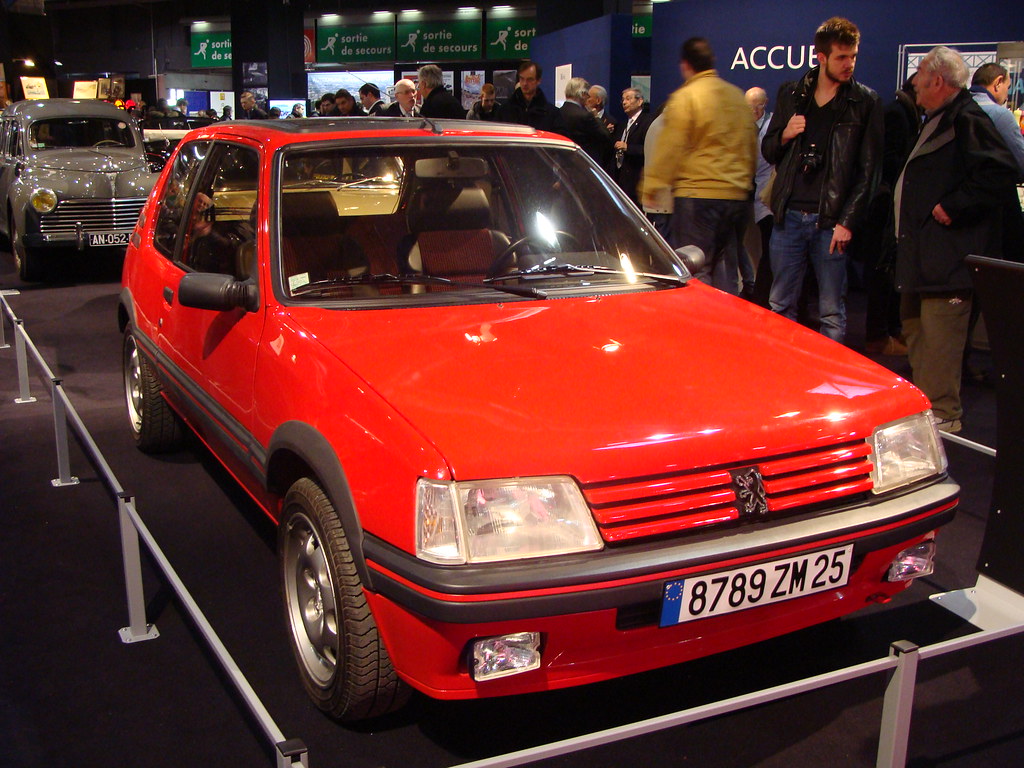
14. Peugeot 205 GTi: The Hot Hatch Icon
When it comes to hot hatches, Peugeot stands as an undisputed champion, consistently delivering small, sporty, and incredibly agile cars that are a sheer joy to drive. Among its celebrated lineup, many enthusiasts and critics alike consider the Peugeot 205 GTi to be the greatest small hatch of all time, a dynamic masterpiece that captivated everybody who got behind the wheel.
Initially powered by a 1.6-liter engine producing 113 hp, the 205 GTi truly hit its stride with the introduction of the 1.9-liter engine, bumping output to a lively 128 hp. This spirited powerplant, combined with the car’s famously lightweight construction, resulted in exhilarating performance. The vehicle also featured a purposeful, sporty aesthetic, with the iconic distinctive red trim around the front grille and the signature ‘golf ball’ shift knob, a tradition that continues on today’s GTI-badged cars.
The thing that truly made the 205 GTi stand out was the way it drove – direct steering, strong performance, and a perfectly tuned sports car chassis that just “felt right,” engaging drivers in every part of the experience. It offered a level of feedback and agility that few rivals could match, making every journey an adventure. Its eager turn-in and playful rear end made it a delight on twisty roads, encouraging enthusiastic driving.
The 205 GTi became a benchmark for hot hatches, a standard against which all others were measured. It demonstrated that exhilarating performance and engaging dynamics could be packaged in a practical, affordable, and compact form, making it accessible to a wide audience. Its blend of raw driving pleasure and iconic design ensures its place as a true automotive legend and a testament to French engineering brilliance in the 1980s.
Car Model Information: 2025 Audi Q7 55 Premium Plus
Name: Peugeot 205
Caption: 5-door
Manufacturer: Peugeot
Production: 1983–1999
Assembly: Mulhouse,Cerizay,Madrid,Los Andes, Chile,Changhua,Tehran,Sopriam
Designer: Gerard Welter,Pininfarina
Class: Supermini
BodyStyle: hatchback,convertible,panel van
Related: Peugeot 309
Layout: Front-engine, front-wheel-drive layout,Mid-engine, four-wheel-drive layout
Engine: ubl
Transmission: Automatic transmission,4/5-speed manual
Wheelbase: 2420 mm
Abbr: on (Cabriolet)
Length: 3705 mm
Width: convert,1589 mm
Height: convert,1354 mm
Weight: convert
Predecessor: Peugeot 104,Talbot Samba,Peugeot 204
Successor: Peugeot 106,Peugeot 206
Platform: PSA PF2 platform
Categories: 1990s cars, All-wheel-drive vehicles, All articles with unsourced statements, Articles with short description, Articles with unsourced statements from April 2011
Summary: The Peugeot 205 is a four-passenger, front-engine, supermini (B-segment) car manufactured and marketed by Peugeot over a sixteen-year production run from 1983 to 1999, over a single generation. Developed from Projet M24 and introduced on 25 February 1983, the 205 replaced the Peugeot 104 and the Talbot Samba, using major elements from their design. It won What Car?’s Car of the Year for 1984. It was also declared “car of the decade” by CAR Magazine in 1990. Peugeot stopped marketing the 205 in 1999 in favor of its new front-engined 206. The 106, which was introduced in 1991, effectively took over as Peugeot’s smaller front-engined model in their lineup. The latter was developed as a close sibling of the Citroën AX, sharing many components and a platform that later evolved into the Citroën Saxo.
Get more information about: Peugeot 205
Buying a high-performing used car >>>
Brand: Peugeot Model: 205 GTi
Price: $55,675 Mileage: 20,490 mi.
The 1980s truly were a remarkable epoch for automotive enthusiasts, a vibrant tapestry woven with the threads of audacious design, technological breakthroughs, and an unbridled passion for speed. From the poster-worthy exotics that screamed excess to the rally-bred machines that redefined performance and the nimble hot hatches that democratized driving fun, this decade delivered an unparalleled array of vehicles that left an indelible mark. These aren’t just old cars; they are enduring legends, each telling a story of innovation, character, and the sheer joy of driving. They remind us that while technology relentlessly marches forward, the purest forms of automotive excitement often lie in the visceral, unfiltered experiences these ’80s kings of the road so perfectly embodied. Their spirit lives on, captivating new generations and cementing the 1980s as a truly golden age for horsepower and driving exhilaration. This era of automotive marvels, with their distinctive boxy silhouettes, charming pop-up headlights, and the thrilling surge of laggy turbos, continues to ignite passion and admiration, proving that some legends only grow stronger with time.



